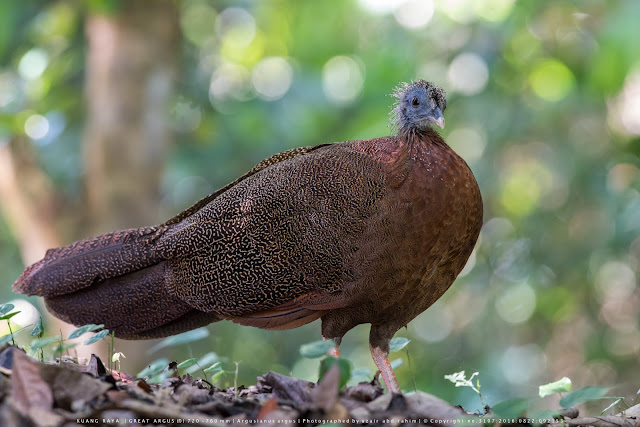The scientific name of the Great Argus was given by Carl Linnaeus in reference to the many eyes-like pattern on its wings. Argus is a hundred-eyed giant in Greek mythology. There are two subspecies recognized: Nominate argus of the Malay peninsula and Sumatra, and A. a. grayi of Borneo. William Beebe considered the two races to be distinct species, but they have since been lumped.

The great argus is a brown-plumaged pheasant with a blue head and neck, rufous red upper breast, black hair-like feathers on crown and nape, and red legs. The male is among the largest of all pheasants. He measures 160–200 cm (63–79 in) in total length, including a tail of 105–143 cm (41–56 in), and weighs 2.04–2.72 kg (4.5–6.0 lb). It has very long tail feathers. The male's most spectacular features are its huge, broad and greatly elongated secondary wing feathers decorated with large ocelli.
 The female is smaller and duller than the male, with shorter tails and less ocelli. She measures 72–76 cm (28–30 in) in total length, including a tail of 30–36 cm (12–14 in), and weighs 1.59–1.7 kg (3.5–3.7 lb). Young males attain adult plumage in their third year.
The female is smaller and duller than the male, with shorter tails and less ocelli. She measures 72–76 cm (28–30 in) in total length, including a tail of 30–36 cm (12–14 in), and weighs 1.59–1.7 kg (3.5–3.7 lb). Young males attain adult plumage in their third year.*all above photos is female Great Argus






No comments:
Post a Comment